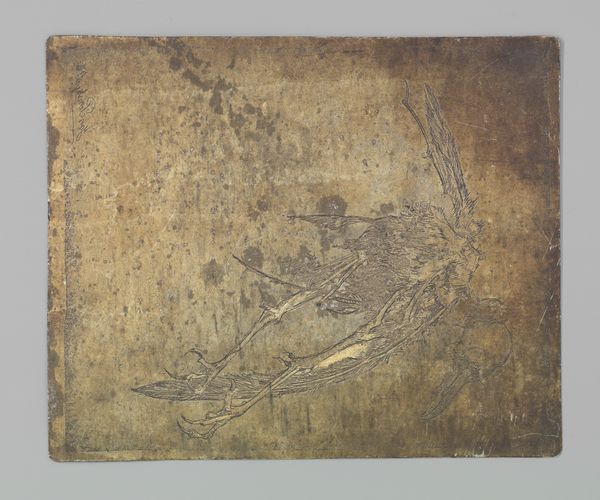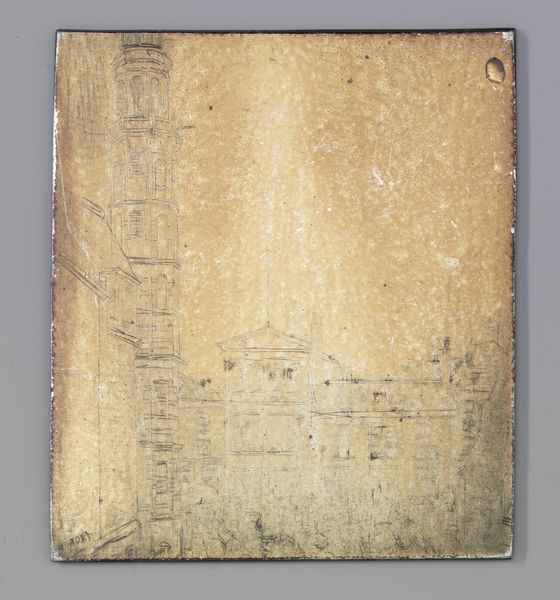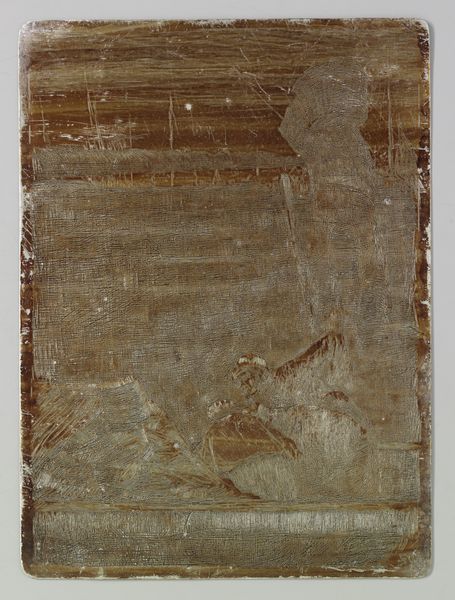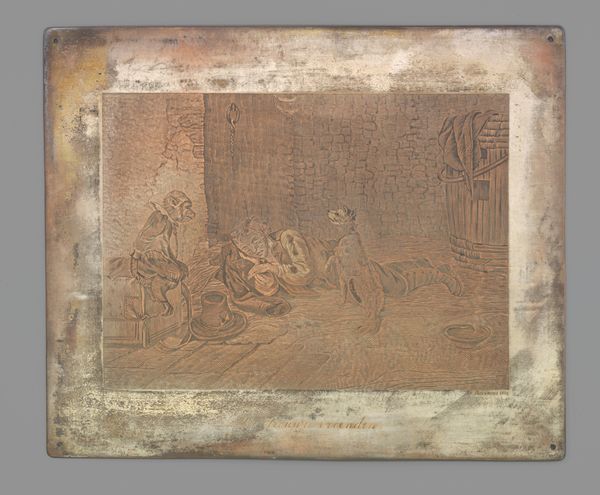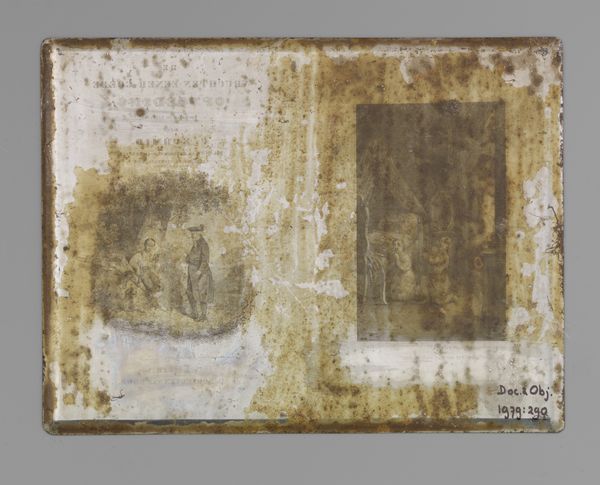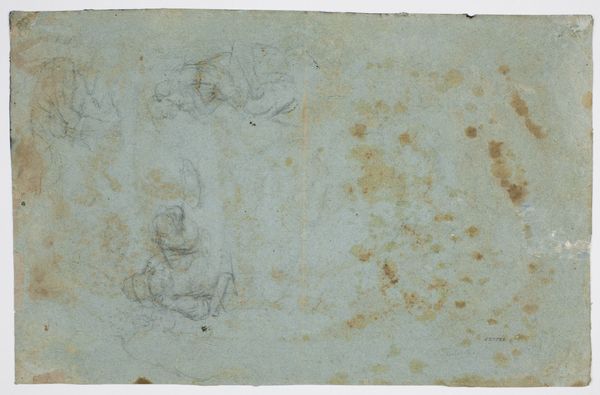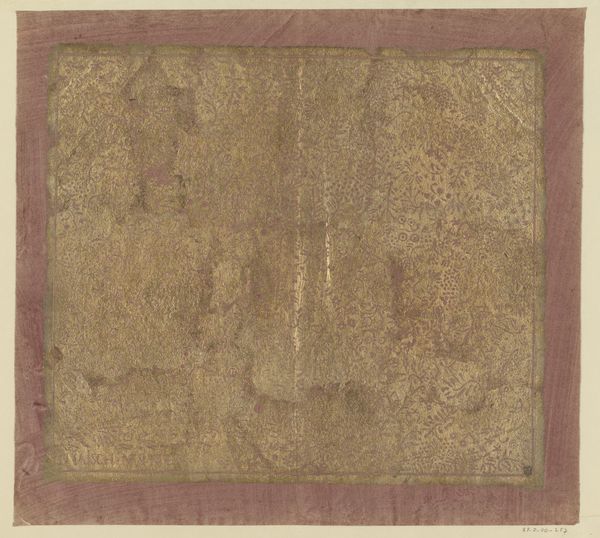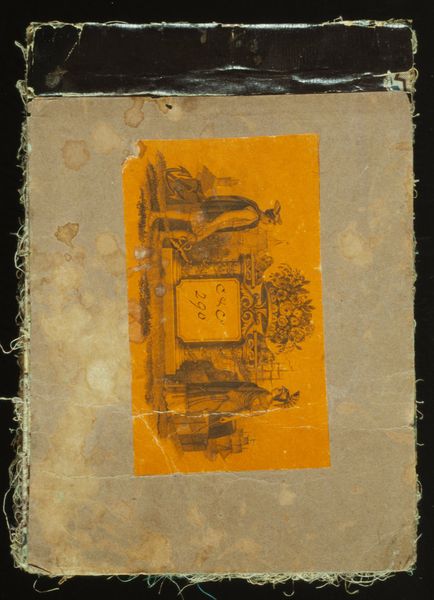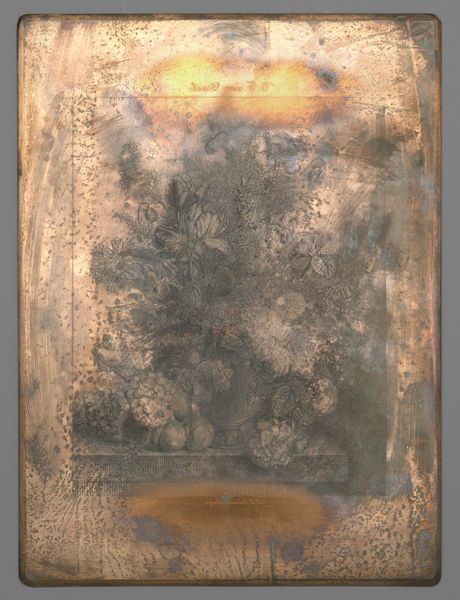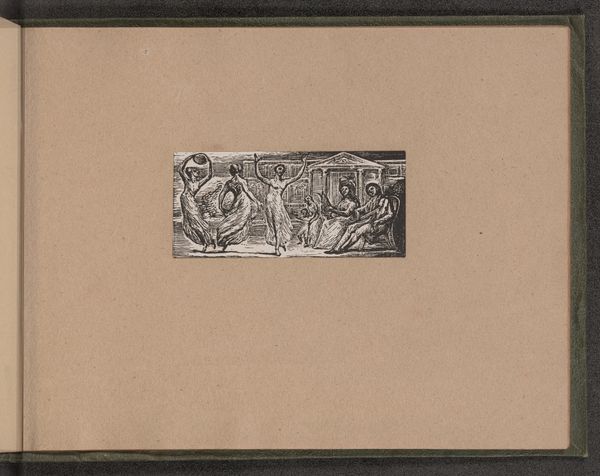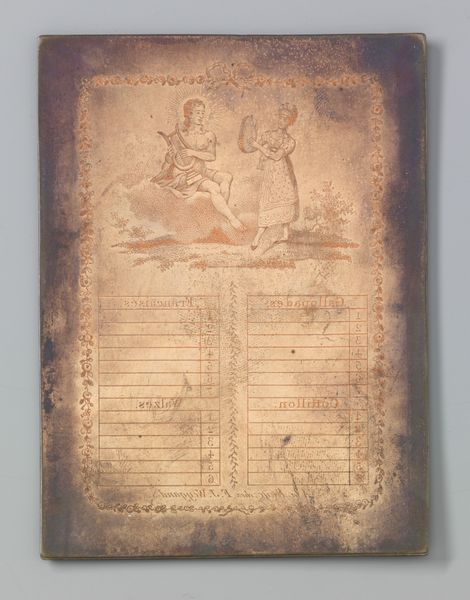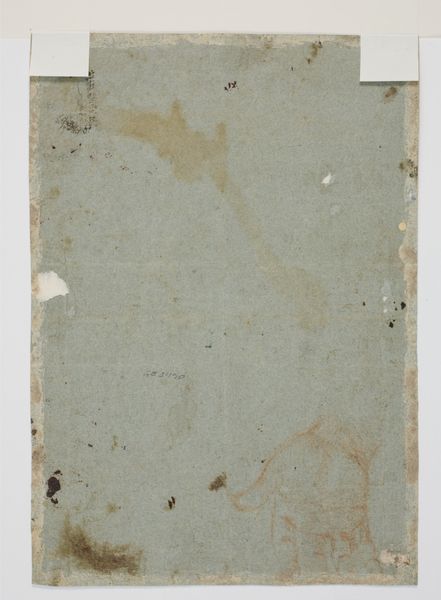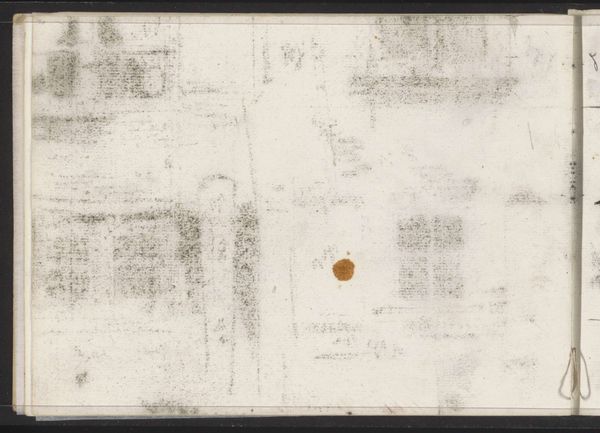
drawing, print, paper
#
drawing
#
water colours
# print
#
paper
#
mixed media
Dimensions: height 196 mm, width 232 mm
Copyright: Rijks Museum: Open Domain
Curator: Looking at this work by Dirk Jurriaan Sluyter, predating 1886, titled 'De Aardbezien' en 'De kleine schoorsteenveger', held here at the Rijksmuseum, one is immediately struck by the visible decay of the media. It's quite striking. Editor: My eye is drawn immediately to the juxtaposition of the two miniature scenes and how they manage to compress labor with fragility and light. The aged, almost ghostly quality adds to that. Curator: The print, rendered with watercolor on paper, presents two contrasting vignettes that invite socio-political reading. Notice the visual organization: one depicts someone seemingly struggling under a large, organic load, whilst the other focuses on chimney sweeps. Editor: It feels like Sluyter is using available techniques—drawing, printmaking and wash work, as cost effectively as possible—to visualize, really *materialize*, certain class disparities in Dutch society. Curator: Precisely. Print culture and dissemination of images were intrinsically linked to social critique at the time. This likely circulated beyond elite circles. These artworks helped to shape and consolidate emerging identities and highlight the stark contrast between manual labor and emerging industrial modernity. Editor: Absolutely. It speaks volumes that he’s pairing "earth burdens" with "small chimney sweeps." It invites us to consider labor as a whole system with interconnected processes and the inherent challenges of that type of physical burden. What sort of paper did Sluyter use here? Curator: That's something worth investigating; that material analysis adds another layer of insight into both Sluyter's resources and production limitations. Editor: Indeed. This isn't simply image-making, this is the transmission of embodied labour via the practical work of accessible material practices and affordable techniques for sharing sociopolitical messaging. Curator: Thinking about the artwork's purpose, its materiality underscores accessibility as an integral aspect of socio-political dialogue during its era. Editor: Definitely; the very composition of materials is embedded with socio-economic narratives and questions about artistic production itself. It's a conversation worth continuing, indeed.
Comments
No comments
Be the first to comment and join the conversation on the ultimate creative platform.
